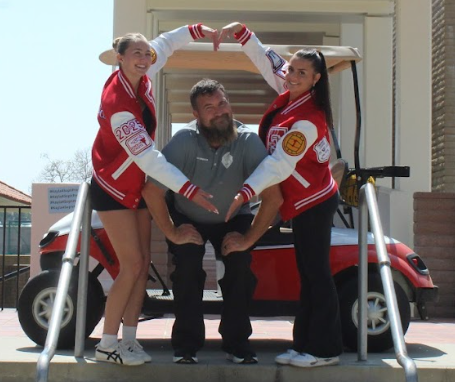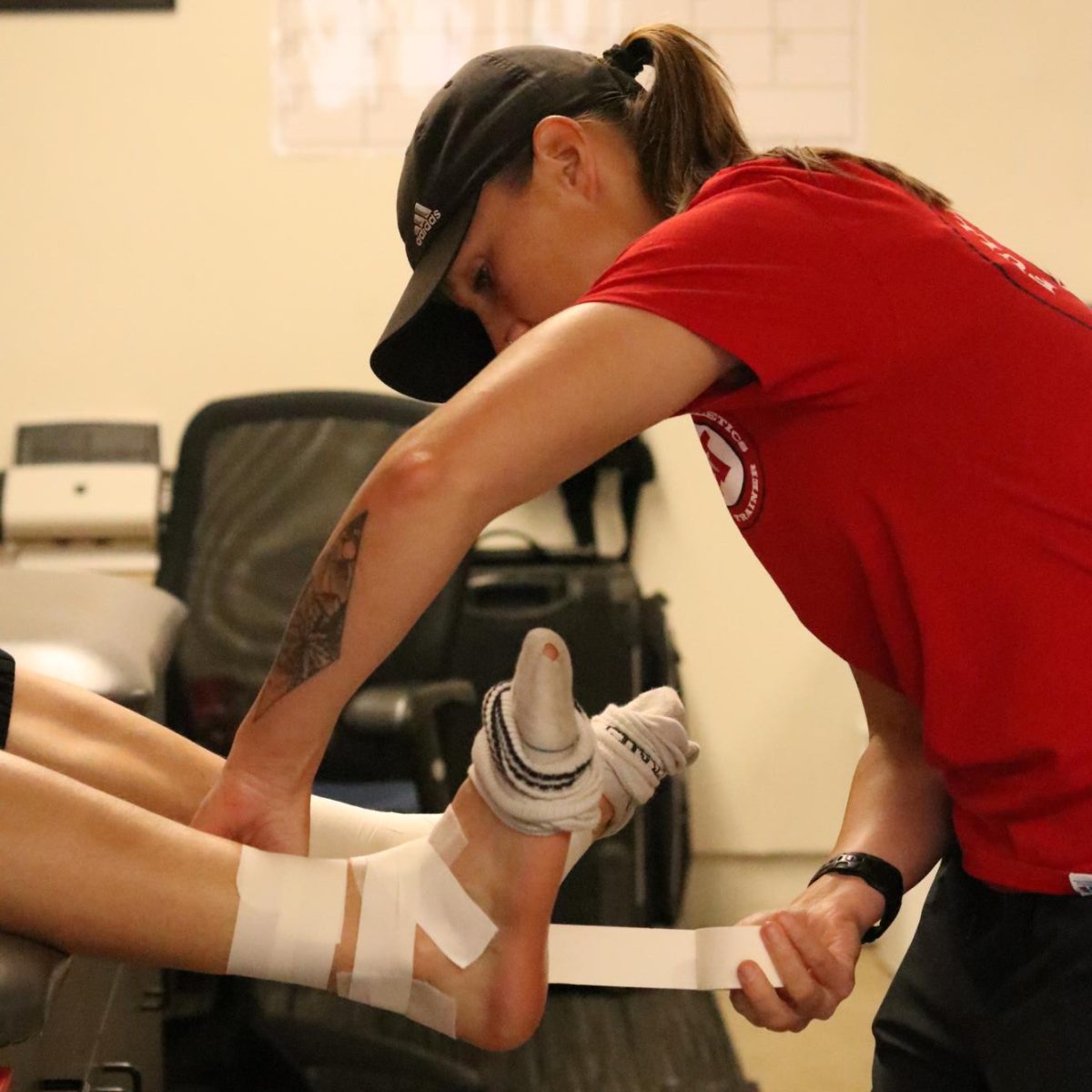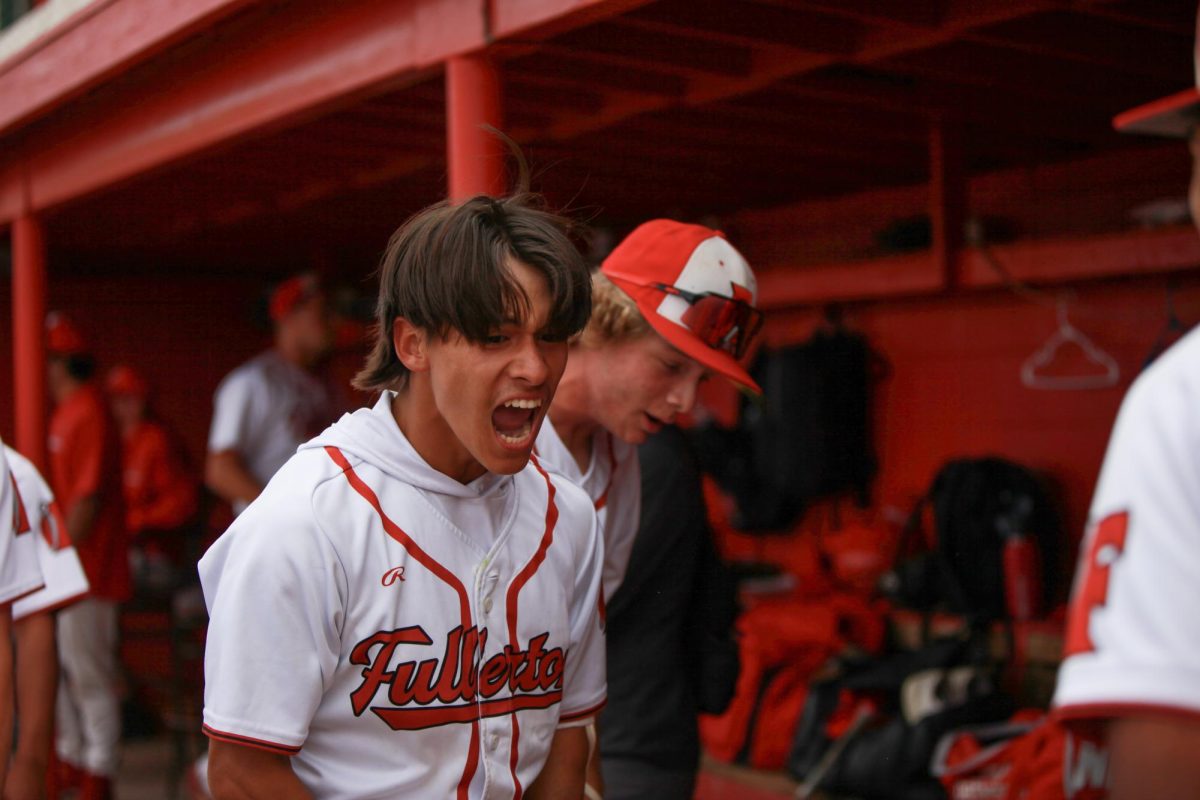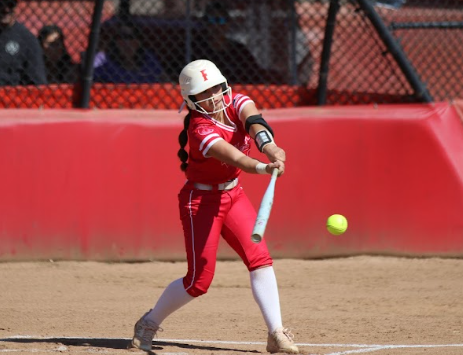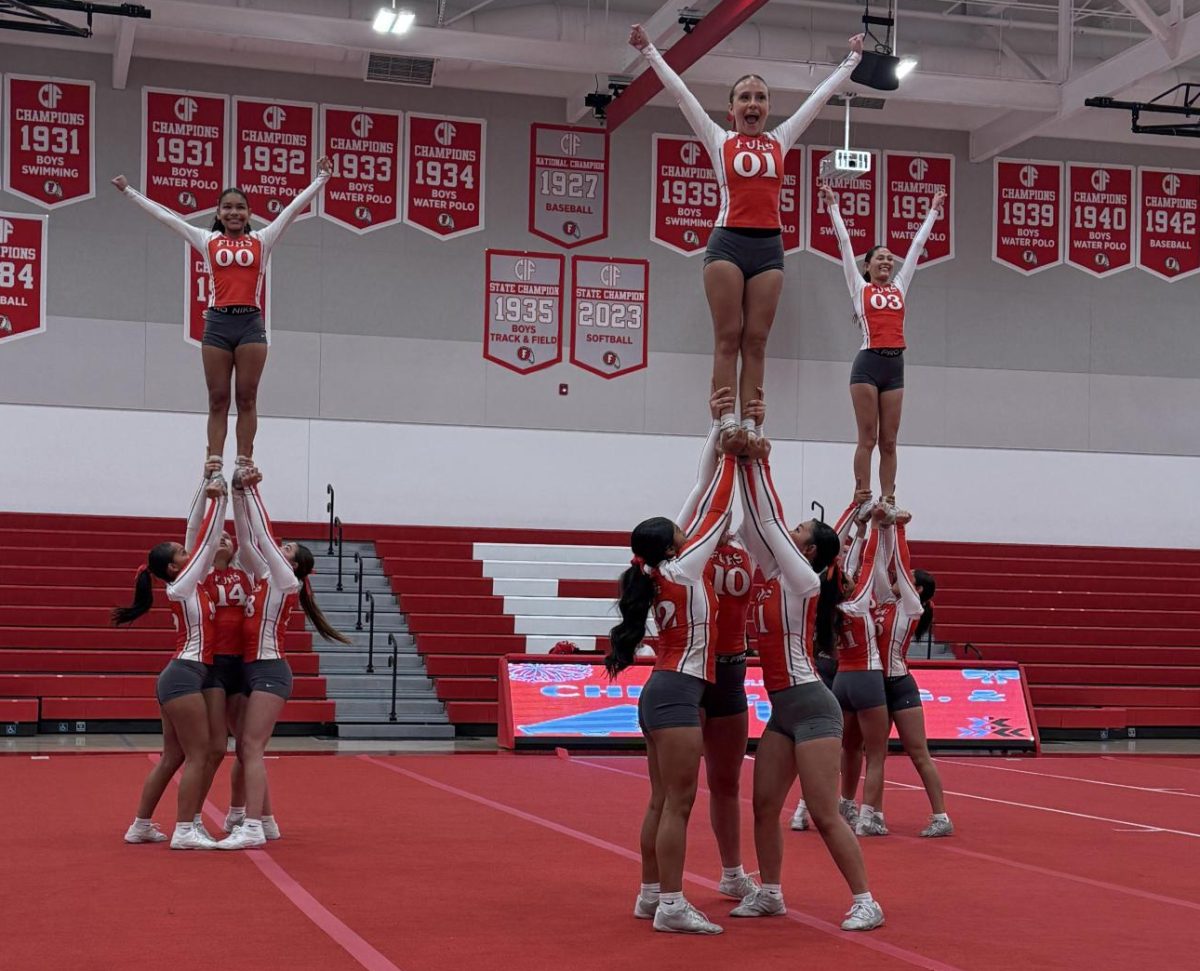Distance learning comes with its fair share of difficulties and frustrations, but for me, a senior who woke up at 6 a.m. for zero period every day for the past four years, the transition has its perks.
Instead of falling out of bed and driving to school in an anxious frenzy, I now start the day with a yoga session.
Both the tangible and intangible benefits of yoga are countless. The mental focus helps develop a more relaxed, meditative mindset while cleansing any stress or anxiety. Yoga also increases flexibility, strengthens muscles and improves bone health and posture. It’s also just a fun way to cure boredom.
Anyone can practice yoga, regardless of age or athletic background. So, for those looking to refresh their quarantine workout routine or for those who just want to get out of bed without spraining their necks, I’ve demonstrated some of the most basic yoga positions below.
For those more flexible or more experienced, each position can be modified to fit a more advanced level.
Pull out a yoga mat, bath towel, or find any flat space at least six feet long and two feet wide (the standard yoga mat size is 24×68) and follow along!
But, before you begin, remember that your breath must guide your practice. As you make your way through each position, breathe in and out through the nose. Fill your lungs to the brim with each inhale, and empty your lungs completely with each exhale. If you experience shortness of breath, reset your body in a Child’s Pose.
Disclaimer: Some positions may not be suitable for those with knee, spine or wrist injuries. Move through all positions with care and caution.
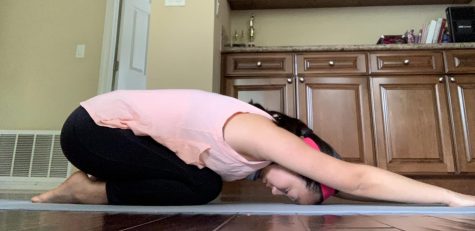
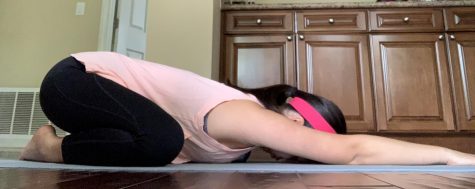
Child’s Pose:
Every yoga session begins with Child’s Pose, which warms up your body and steadies your breath, while lengthening the spine, neck and shoulders.
Sit on your knees, lean forward, reach your arms as far towards the top edge of your mat as possible. Rest your forehead on the mat.
Breathe deeply through the nose, and observe how each breath lengthens your spine and deepens this stretch.
Table Top Sequence:
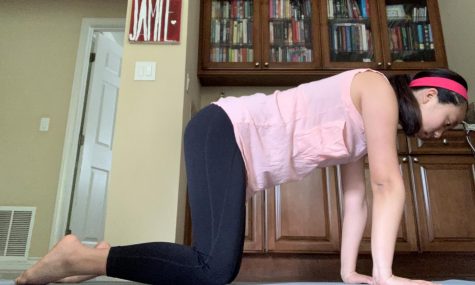
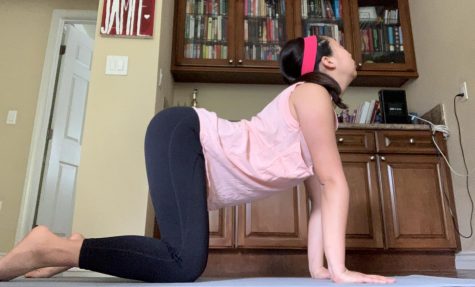
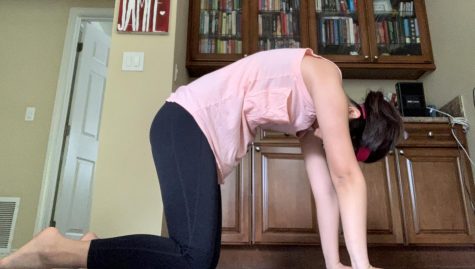
Transition from Child’s Pose or perform this sequence on its own to stretch the shoulders, neck, upper and lower spine.
Begin on your hands and knees, your body mimicking a table top. Slowly lower your hips, round your spine, and drop your head to transition into Cat position. Finally, end with Cow by lifting your hips upwards. Lean downwards into your shoulders and lift your chin. Repeat the sequence leading the movement with your hips, not your spine or chin. Keep breathing.
Downward-Facing Dog:
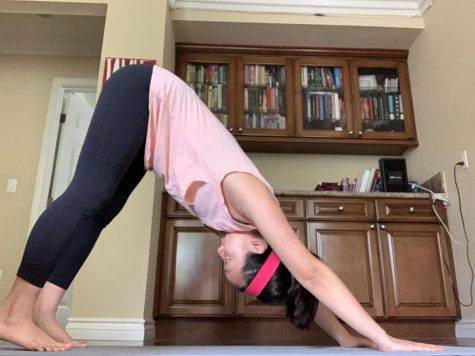
From table-top, transition into Down Dog. Lift your hips upwards to the ceiling and push your shoulders back and towards your thighs, all five fingers flat on the mat. Your body should create a triangular shape. Pedal each leg back and forth (bend each knee slightly) to settle into the pose. Bend your knees as much as necessary. Yoga shouldn’t be painful.
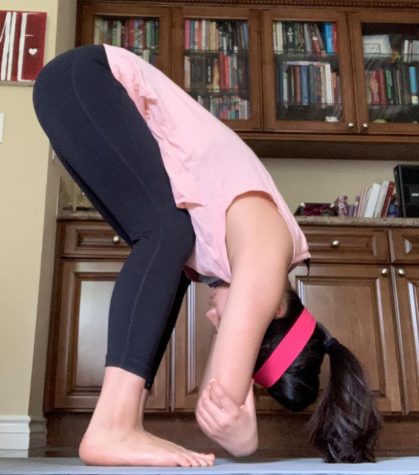
Forward Fold:
From Down Dog, walk your feet up to your hands. With knees slightly bent, fold forward over your thighs. Let your head hang and clutch each elbow. Observe the sensation in your thighs from the weight of your torso. You can sway side-to-side or stay completely still. Observe how each exhale lengthens your spine.
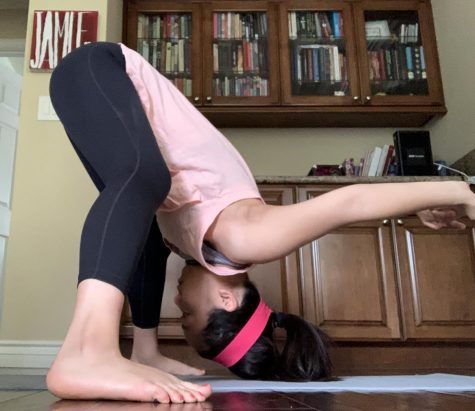
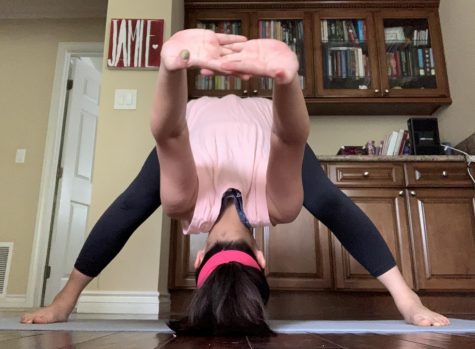
To target your hamstrings, widen your stance to enter Wide Forward Fold. Keep your feet mat distance apart. Add a chest expansion by interlocking your hands behind your back and letting your arms hang over your head. You should feel a stretch in the chest and shoulders.
Halfway Lift:
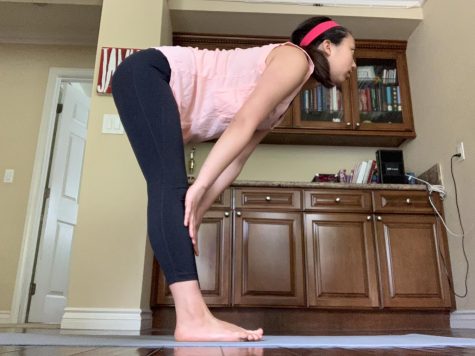
Inhaling, lift your torso using core strength, not your arms. Your torso, neck and head should be parallel to the ground. Slide your hands up to rest on your shins. Make sure your shoulders aren’t folding downwards or pinching inwards. Keep your knees as straight as you can, but don’t lock them.
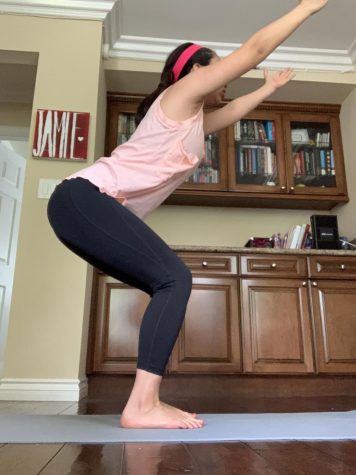
Chair Pose:
I think of Chair as a modified squat frozen in time. Move your feet hip-distance apart, and sink into a “chair.” Focus your weight into the balls of your feet. You should be able to lift all your toes off the ground. Keep your back flat and core tight, and knees above your ankles. No matter how low you bend, your knees should never pass your toes. You should be able to see your toes at all times. For added challenge, raise your arms overhead. Hold for as many breaths as you want.
Tree Pose:
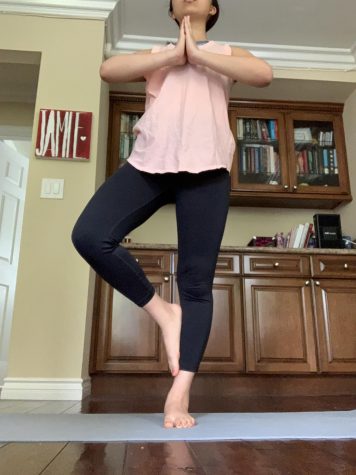
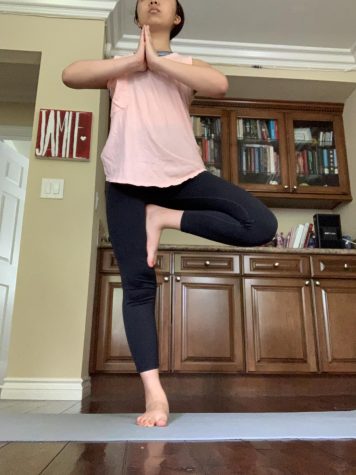
Stand and bring your hands to heart-center (put your hands together in front of your chest) to transition to Tree, which improves balance and posture and strengthens the core and leg muscles.
Shift your weight to your right foot. Once you’ve found your balance, lift the left leg, turn the hip out, and place your foot along any spot of the inner right calf. Do not place your foot on your knee. Do not leverage your left foot to find balance, the majority of the pressure should be in your right leg and foot into the mat below. Focus, breathe, balance. Switch feet and repeat.
Warrior:
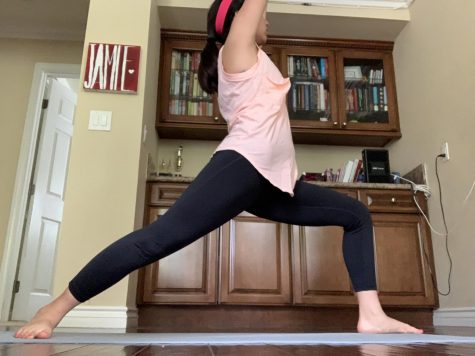
Transition into Warrior 1 from Down Dog to improve core and leg strength, balance, and stamina. Bring your right foot forward, placing it in between your two hands. Swivel your left foot so that the side is parallel to the bottom edge of the mat, toes facing the left. Using your core, not your arms, lift your torso up, arms reaching to the ceiling, both hips facing forward.
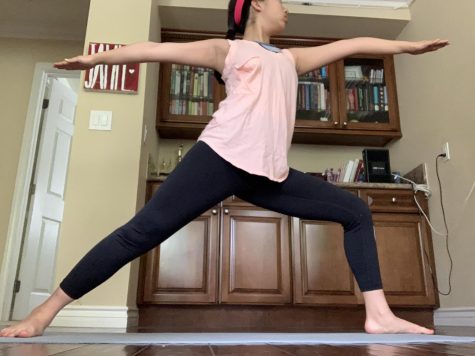
For Warrior 2, swivel your hips so both face the left, and lower your arms so they reach outwards and away from each other. Keep your back foot parallel to the bottom edge of the mat. Keep your head facing forward. Keep your core tight, and breath steady.
Switch sides and repeat.
Lunges:
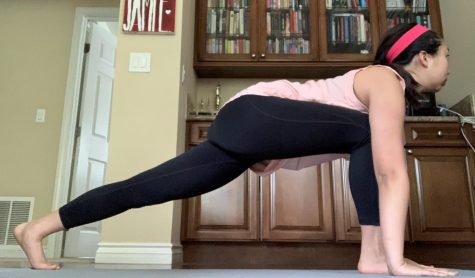
Different variations of lunges focus on different areas of the body, but all strengthen the core, legs and ankles.
Transition from Warrior 1 or 2 into a Runner’s lunge. Place your hands on the mat, your front foot in between. All toes should face the front of the mat, your front foot flat and the back foot lifted on your toes. Distribute your weight evenly between both legs, hips facing forward. You should feel a slight burning sensation along your front thigh and back calf, hamstring and ankle.
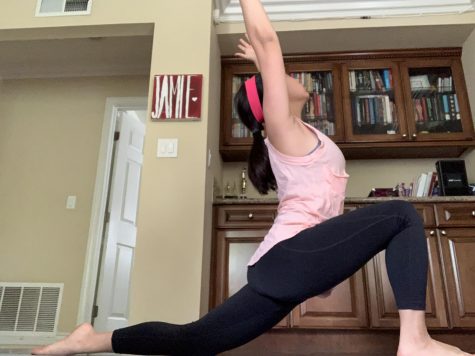
From here, transition into a Crescent Moon by lowering your back knee onto the mat. Untuck your toes so the top of your foot is flat on the mat. Keep your front knee directly above the ankle at all times, even when you settle deeper into the pose. Using your core, lift your torso and arms, reaching upwards. If you feel balanced here, add a slight back bend by reaching your arms behind you, lengthening your front torso.
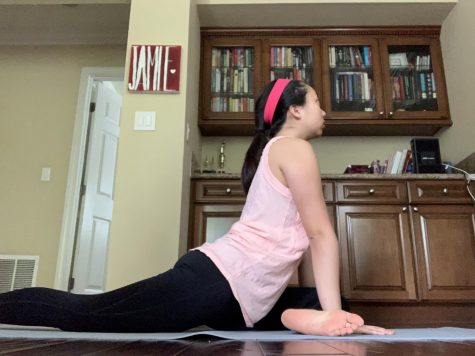
If Crescent Moon is enough stretch for you, stay there. If you want a deeper stretch in your hip flexors and legs, enter Pigeon. Pigeon is demanding, so listen to your body and stop when things feel tense, uncomfortable or painful.
Lower onto the side of your front leg, so that both legs are flat on the mat and the front leg is bent like you’re doing half of a criss-cross-applesauce. Face both hips forward, weight distributed evenly between the two. To deepen, scoot your front shin parallel to the top edge of your mat. If your body begins to tense, stop here.
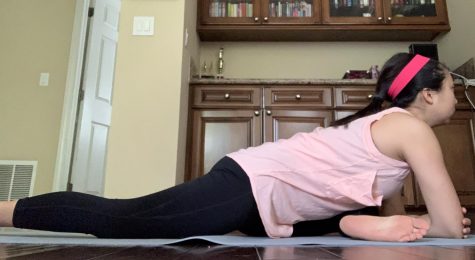
Lower your torso over your front leg, resting on your elbows. Eventually lower onto your forehead if possible. Switch legs and repeat the lunge sequence.
YouTube Resources:
These are just a few of many positions, terms and sequences. If you want to learn more, YouTube is an excellent resource for yogis of all levels. I’ve included links and descriptions to 20-30 minute yoga sessions by SaraBethYoga.
30 Minute Full Body Morning Yoga Stretch
This session is an excellent, energizing way to begin the day. This requires more flexibility and core strength than a beginner might have, but the positions can be easily modified for beginners. Observe how your body feels lighter, more fluid and relaxed after this session.
30 Minute Mindful Morning Yoga
If you prefer practicing to the rhythm of your own breath, this session focuses on free flow and independent practice. SaraBeth guides you for the first few minutes then allows you to flow through the sequences on your own. This session is for all levels. However, if you don’t feel comfortable enough to practice on your own and yoga terms confuse you, maybe try something else.
20 Minute Full Body MOBILITY
If you’re looking for something more intense, you’ll definitely break a sweat during this session. This actively targets the muscles on your limbs and core, while improving flexibility. This is a great session for all levels and can be used as a pre- or post-workout exercise or a workout all on its own.
30 Minute Full Body Yoga Stretch for Flexibility and Sore Muscles
This session is great for anyone feeling sore from an intense workout. Use this to cool down post-workout or relaxing healing session on your rest-day. Some positions here require more flexibility than a true beginner might have, but can be easily modified.

